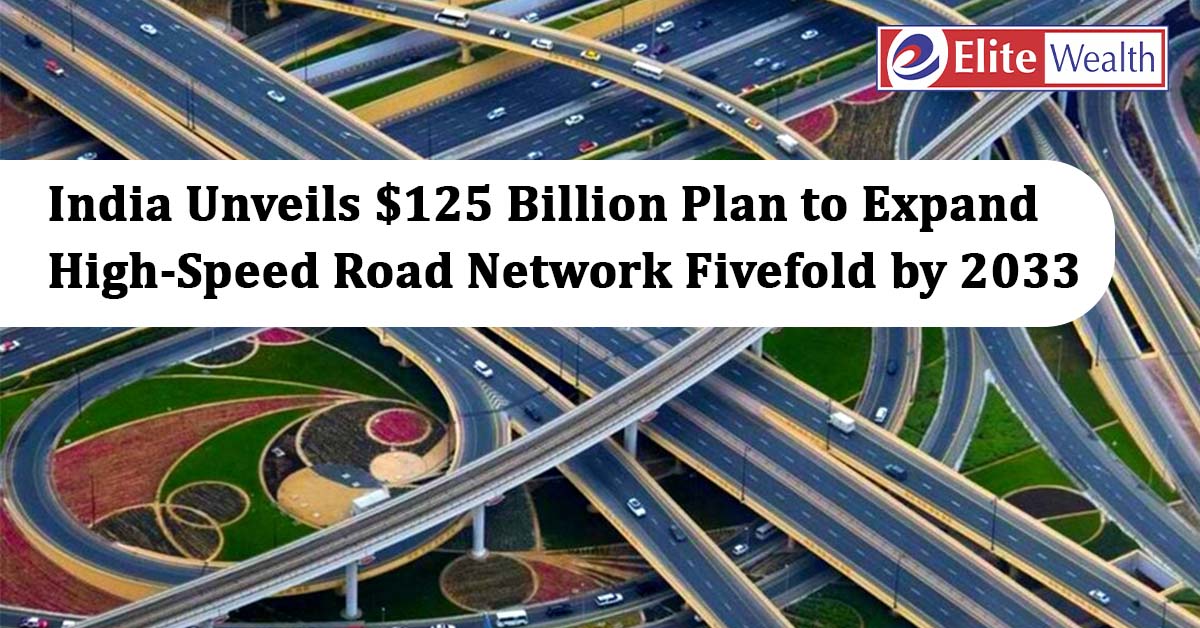
India has announced one of its most ambitious infrastructure initiatives yet — a ₹11 lakh crore ($125 billion) investment to expand its high-speed road network nearly fivefold by 2033. Spearheaded by the Ministry of Road Transport and Highways, the plan seeks to build 17,000 km of access-controlled expressways, significantly improving logistics efficiency, boosting economic connectivity, and positioning India alongside global infrastructure leaders.
Scope and Scale of the Project
- Target Network: 17,000 km of new access-controlled expressways.
- Speed Advantage: Designed for vehicles traveling up to 120 km/h, ensuring faster, safer journeys compared to conventional highways.
- Current Baseline: As of March 2025, India had over 146,000 km of national highways, but only 4,500 km met high-speed standards.
- 2033 Goal: Expand to 21,500 km of high-speed roads.
Timeline and Implementation
- 40% of corridors already under construction, expected to be completed by 2030.
- Remaining projects will commence by 2028 and finish by 2033.
This phased approach supports India’s rapid urbanization, industrial corridor development, and e-commerce-driven logistics demand.
Financing Models and Private Sector Role
The government will adopt a hybrid financing approach to execute the mega-project:
- Build-Operate-Transfer (BOT) Model:
- Used for projects with 15%+ returns.
- Private developers build roads and recover costs through toll collection.
- Hybrid Annuity Model (HAM):
- Government funds 40% of construction upfront.
- Developers cover the remaining costs, repaid through annuity payments over time.
While HAM has dominated recent projects due to lower risk for developers, the government aims to revive private sector participation, particularly as global investors like Brookfield, Blackstone, and Macquarie show growing interest in Indian infrastructure assets.
Global Comparisons: India vs. Major Economies
India’s expressway expansion draws parallels with the strategies of infrastructure powerhouses:
- China: Over 180,000 km of expressways built since the 1990s.
- United States: Maintains over 75,000 km of interstate highways.
- India Today: 4,500 km of high-speed roads.
- India 2033 Target: 21,500 km — smaller in scale but aggressive in timeline and ambition.
Strategic Significance
- Economic Competitiveness: Lower logistics costs, enabling smoother trade and supply chains.
- Urban-Industrial Linkages: Stronger connectivity between metros, tier-2 cities, and industrial corridors.
- Job Creation: Large-scale employment opportunities in construction, logistics, and allied industries.
- Investor Confidence: Clear signals of India’s commitment to infrastructure-led growth.
Key Takeaways
- Investment Size: ₹11 lakh crore (~$125 billion).
- Expressway Expansion: 17,000 km by 2033.
- Lead Agency: Ministry of Road Transport & Highways, with NHAI overseeing implementation.
- Funding Models: BOT for high-return corridors, HAM for others.
- Global Benchmarking: India to become one of the largest expressway builders within a decade.
This initiative underscores India’s long-term vision of modern, sustainable mobility infrastructure, strengthening its position as a global economic powerhouse while making road travel faster, safer, and more efficient.
Disclaimer:
This article is intended solely for educational and informational purposes. The securities or companies mentioned are provided as examples and should not be considered as recommendations. Nothing contained herein constitutes personal financial advice or investment recommendations. Readers are advised to conduct their own research and consult a qualified financial advisor before making any investment decisions.
Investments in securities markets are subject to market risks. Please read all related documents carefully before investing.
